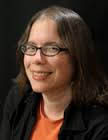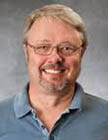Three TREE Awards Announced

Three outstanding Cottrell Scholars have been named the first recipients of RCSA’s new TREE Award (Transformational Research and Excellence in Education) intended to recognize and advance truly outstanding research and education.
The winners are Catherine J. Murphy, chemistry, University of Illinois, Urbana-Champaign; Mats Selen, physics, also University of Illinois, Urbana-Champaign; and Keivan Stassun, physics, Vanderbilt University.
They were selected by a committee of senior Cottrell Scholars and members of the RCSA scientific staff, with final selection approved by RCSA President Robert Shelton and the foundation’s Board of Directors.
 -- In the mid-1990s Murphy was among the first inorganic chemists to start a program in the synthesis, functionalization, and utilization of inorganic nanomaterials. Her early work on unpassivated II-VI semiconductor “quantum dots” as chemical sensors was well ahead of its time. This work is still highly cited and influential today. According to Google Scholar, Murphy’s work has been cited nearly 30,000 times overall, with an overall h index of 76; since 2009, her citations are almost 18,500, with an h-index of 63. Her groundbreaking paper on anisotropic metal nanoparticles (J. Phys. Chem. B, 2005) has been cited almost 1,800 times. Thompson Reuters identifies her as 10th among the 100 most frequently cited material scientists in the world for the first decade of the 21st century. In addition she is a champion of undergraduate research and a long-time contributing author to the most widely used introductory general chemistry textbook, Chemistry: The Central Science. Murphy is also one of the few tenured faculty members who regularly teaches Illinois’ first-year general chemistry course.
-- In the mid-1990s Murphy was among the first inorganic chemists to start a program in the synthesis, functionalization, and utilization of inorganic nanomaterials. Her early work on unpassivated II-VI semiconductor “quantum dots” as chemical sensors was well ahead of its time. This work is still highly cited and influential today. According to Google Scholar, Murphy’s work has been cited nearly 30,000 times overall, with an overall h index of 76; since 2009, her citations are almost 18,500, with an h-index of 63. Her groundbreaking paper on anisotropic metal nanoparticles (J. Phys. Chem. B, 2005) has been cited almost 1,800 times. Thompson Reuters identifies her as 10th among the 100 most frequently cited material scientists in the world for the first decade of the 21st century. In addition she is a champion of undergraduate research and a long-time contributing author to the most widely used introductory general chemistry textbook, Chemistry: The Central Science. Murphy is also one of the few tenured faculty members who regularly teaches Illinois’ first-year general chemistry course.
 -- Selen, a fellow of the American Physical Society, is widely recognized for his critical contributions to the development of CLEO, a general-purpose particle detector at the Cornell Electron Storage Ring (CESR), and his work to advance the understanding of charm hadronic decays and excited states. A few years ago he turned his research focus toward astrophysics, joining the Dark Energy Survey collaboration and working on problems in the field of supernova physics. Most recently, his focus has turned to the field of Physics Education Research. He and his colleagues received the APS Excellence in Physics Education Award for their creation of “smartPhysics,” an innovative approach to teaching that does away with the traditional textbook. As a result, the fraction of students who find classroom lectures useful, with the same people teaching, has gone from 40 percent to 80 percent. Selen has also created an electronic/mechanical learning tool, basically a wireless hand-held physics lab, to be incorporated in “smartPhysics” classes. In addition to teaching Physics 211, a calculus-based introductory mechanics course for physics majors and engineers that averages roughly 1,000 students each semester, Selen is also a local celebrity, spreading the gospel of physics to Champaign’s morning TV news audience as “the Whys Guy” in a 10-minute weekly segment.
-- Selen, a fellow of the American Physical Society, is widely recognized for his critical contributions to the development of CLEO, a general-purpose particle detector at the Cornell Electron Storage Ring (CESR), and his work to advance the understanding of charm hadronic decays and excited states. A few years ago he turned his research focus toward astrophysics, joining the Dark Energy Survey collaboration and working on problems in the field of supernova physics. Most recently, his focus has turned to the field of Physics Education Research. He and his colleagues received the APS Excellence in Physics Education Award for their creation of “smartPhysics,” an innovative approach to teaching that does away with the traditional textbook. As a result, the fraction of students who find classroom lectures useful, with the same people teaching, has gone from 40 percent to 80 percent. Selen has also created an electronic/mechanical learning tool, basically a wireless hand-held physics lab, to be incorporated in “smartPhysics” classes. In addition to teaching Physics 211, a calculus-based introductory mechanics course for physics majors and engineers that averages roughly 1,000 students each semester, Selen is also a local celebrity, spreading the gospel of physics to Champaign’s morning TV news audience as “the Whys Guy” in a 10-minute weekly segment.
 -- One of the rarest events in astronomy is the discovery of an entirely new class of objects. Stassun and his collaborators made such a discovery in 2007 with the first detection of a brown dwarf eclipsing binary system. In a second outstanding research achievement, Stassun and a graduate student discovered the correlation between stellar "flicker" and the surface gravity of the corresponding star. These measurements promise to better constrain the properties of stars themselves, but they are also leading to better constraints on the properties of extrasolar planets. Meanwhile, in the field of education, Stassun is the prime architect of the highly successful Fisk-Vanderbilt Master’s-to-Ph.D. Bridge program. It has triggered a revolution in the way science doctoral programs at research institutions deal with potential candidates among underrepresented minorities. Stassun’s bridge program is now being emulated at the University of Michigan, Columbia University, MIT and Harvard. National Public Radio reports that since it began with a three-student cohort in 2004, “the Fisk-Vanderbilt masters-to-Ph.D. Bridge Program has accepted 68 students, 55 of whom came from underrepresented minority backgrounds (namely African-American, Hispanic and Native American) and 46 percent of the students have been women.” The program has a retention rate of 92 percent, with 100 percent job placement for those who complete the program. According to Stassun as the program was starting up it greatly benefited from the visibility and imprimatur provided by RCSA as a respected national organization for advancing the physical sciences.
-- One of the rarest events in astronomy is the discovery of an entirely new class of objects. Stassun and his collaborators made such a discovery in 2007 with the first detection of a brown dwarf eclipsing binary system. In a second outstanding research achievement, Stassun and a graduate student discovered the correlation between stellar "flicker" and the surface gravity of the corresponding star. These measurements promise to better constrain the properties of stars themselves, but they are also leading to better constraints on the properties of extrasolar planets. Meanwhile, in the field of education, Stassun is the prime architect of the highly successful Fisk-Vanderbilt Master’s-to-Ph.D. Bridge program. It has triggered a revolution in the way science doctoral programs at research institutions deal with potential candidates among underrepresented minorities. Stassun’s bridge program is now being emulated at the University of Michigan, Columbia University, MIT and Harvard. National Public Radio reports that since it began with a three-student cohort in 2004, “the Fisk-Vanderbilt masters-to-Ph.D. Bridge Program has accepted 68 students, 55 of whom came from underrepresented minority backgrounds (namely African-American, Hispanic and Native American) and 46 percent of the students have been women.” The program has a retention rate of 92 percent, with 100 percent job placement for those who complete the program. According to Stassun as the program was starting up it greatly benefited from the visibility and imprimatur provided by RCSA as a respected national organization for advancing the physical sciences.
The TREE Award, which comes with a $25,000 prize, is highlighted in two venues: Awardees are asked to give a plenary talk at the Cottrell Scholar Conference, and a session or reception is organized at either an American Chemical Society or APS national meeting in honor of the awardee.
Outstanding candidates are admitted to the ranks of Cottrell Scholars through a stringent peer-review process based on their innovative research proposals and education programs. As Scholars rise to academic leadership roles, several new levels of competitive funding, including the TREE Award, are being made available to assist them. MORE
Questions may be addressed to RCSA Program Director Silvia Ronco (sronco@rescorp.org)






